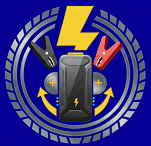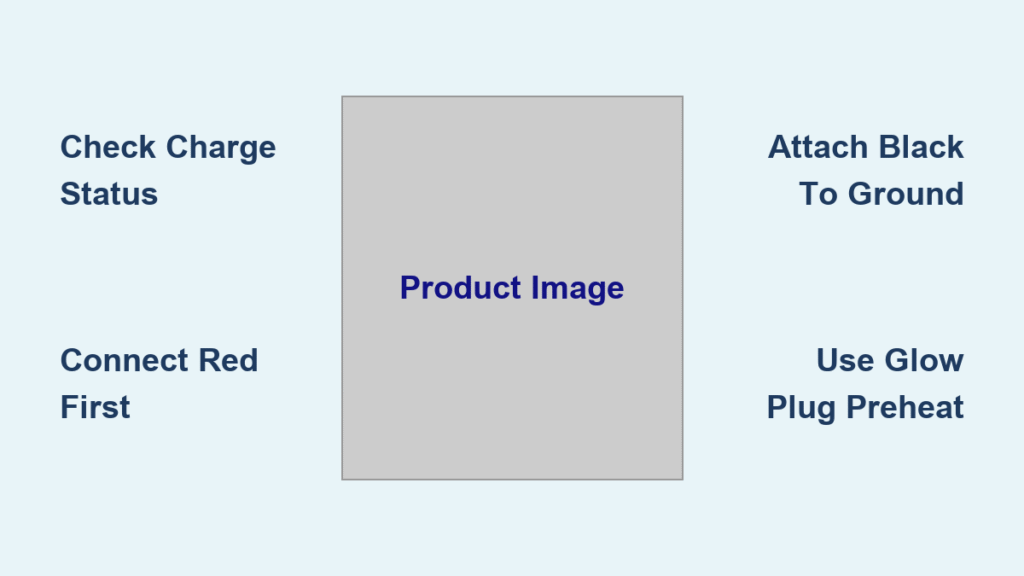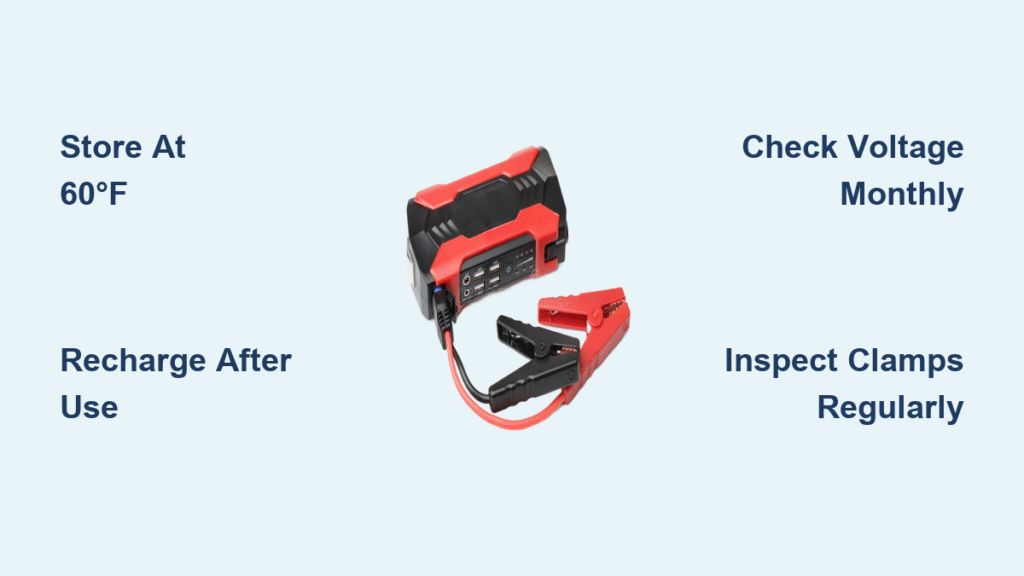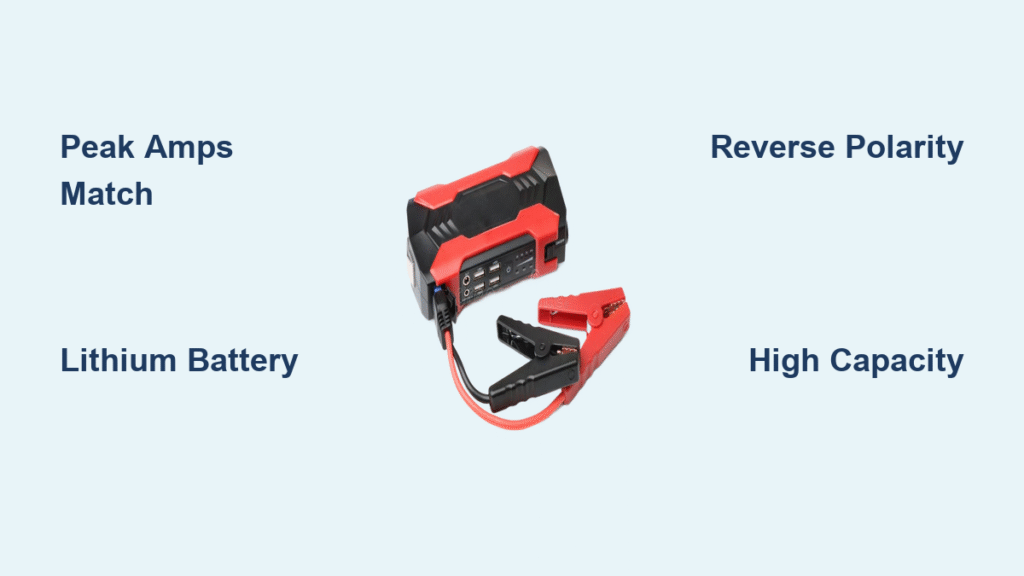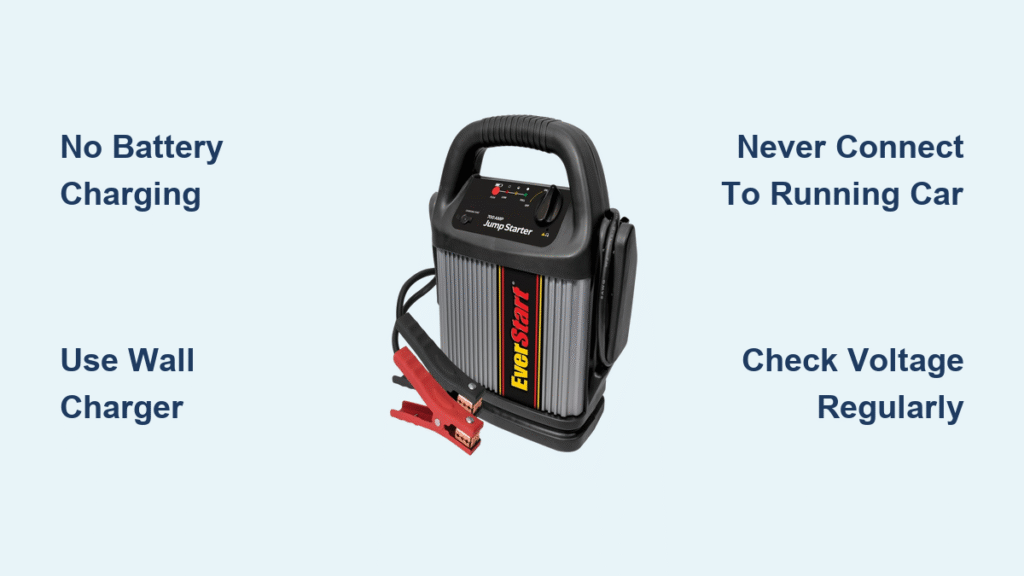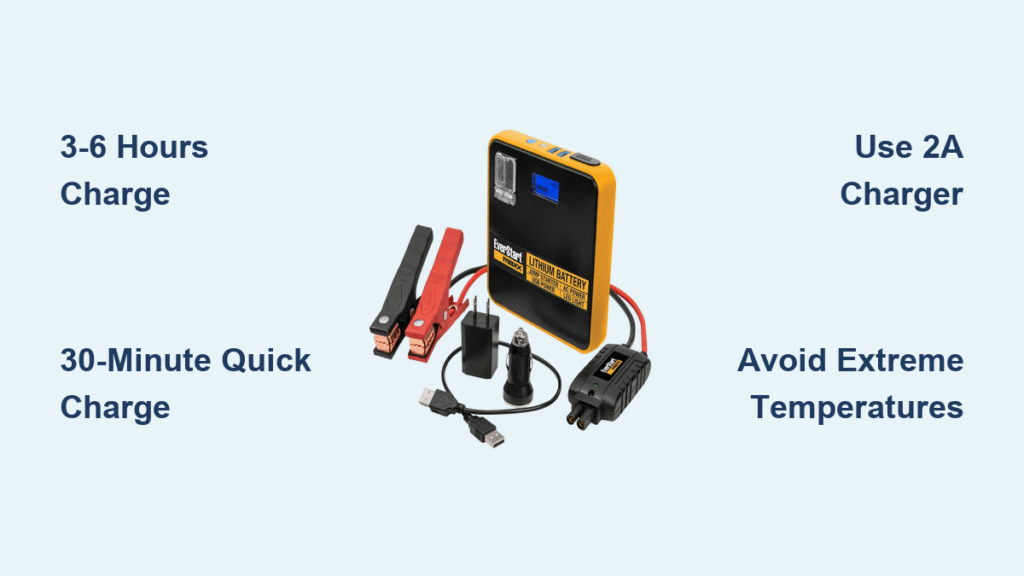That dreaded morning when your car won’t start, the temperature has plummeted overnight, and all you hear is a faint clicking sound. Your Audew jump starter sits in the trunk, but will it actually rescue you? The difference between getting back on the road and waiting for roadside assistance hinges entirely on using this device correctly—not just owning it. Too many drivers assume jump starters work like magic, only to discover their vehicle remains stubbornly dead despite having the right equipment. The reality is that successful jump-starting demands precise steps tailored to your engine type, seasonal conditions, and specific Audew model. This guide delivers the exact sequence to start your car reliably every time, whether you’re facing a gasoline or diesel engine in freezing temperatures or summer heat.
Most emergency power supplies vary significantly in battery composition (lithium polymer versus lead-acid), operating temperature ranges, and peak current output—from 300-400A for compact cars to 450-900A for heavy-duty vehicles. Crucially, blindly following generic instructions won’t cut it. Diesel engines, for instance, require special handling because they ignite through compression rather than spark plugs, demanding substantially more power. Add cold weather into the mix, and diesel fuel thickens or even gels, necessitating preheating systems that drain additional power. By the end of this guide, you’ll know exactly how to match your Audew unit to your vehicle’s needs while avoiding critical errors that sabotage your jump-start attempt.
Verify Power Levels Before Connecting
Check Charge Status for Your Engine Type
Never assume your Audew unit has sufficient power—especially in cold weather. Lithium-based jump starters lose effectiveness as temperatures drop, making a full charge non-negotiable for diesel vehicles. Locate the power indicator lights on your Audew device; if fewer than three bars are illuminated (below 75% capacity), recharge immediately. Gasoline engines typically tolerate lower charge levels, but diesel models demand near-full capacity due to higher compression ratios. Skipping this check risks draining your jump starter completely during the first crank attempt, leaving you stranded.
Confirm Cable Indicator Readiness
Before touching battery terminals, plug the blue connector fully into the Audew host unit. The cable indicator light must be off—this signals proper connection and safety readiness. If the light flashes red or stays illuminated, disconnect and reseat the plug firmly. A lit indicator often means the unit isn’t securely engaged, which could trigger error states during startup. This step is critical because improperly seated cables prevent the unit from delivering peak current when you need it most.
Connect Clamps with Military Precision
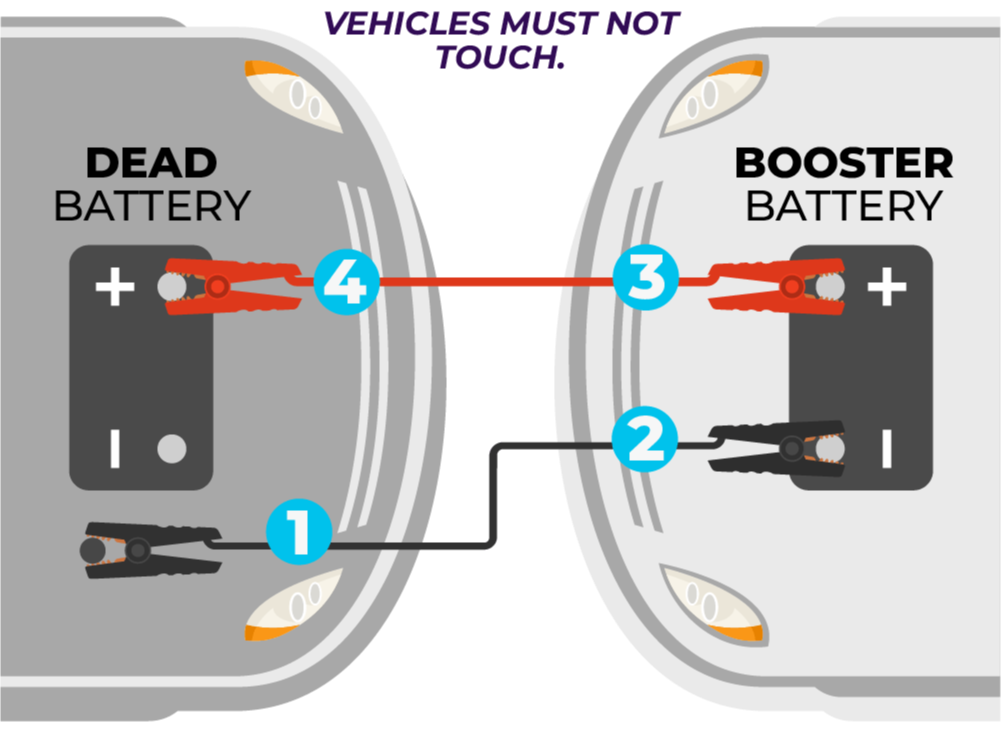
Identify Battery Terminals Visually
Locate your car battery’s “+” (positive) and “-” (negative) symbols before handling clamps. The positive terminal usually has a red plastic cover or “+” marking, while the negative is bare metal. Wipe away visible corrosion with a dry cloth—green or white buildup insulates terminals and blocks power transfer. Never skip this cleaning step; even minor corrosion can reduce cranking power by 30% or more, especially in humid climates where terminals oxidize rapidly.
Attach Red Clamp to Positive Terminal First
Secure the red clamp firmly onto the exposed positive battery post. Squeeze the clamp until you hear a distinct click, ensuring metal teeth bite through any residue. A loose connection here causes intermittent power delivery, often mistaken for a “dead” jump starter. Test stability by gently tugging the cable—if it slips, reattach with more force. This sequence prevents accidental short-circuiting that could damage your vehicle’s electronics.
Fasten Black Clamp to Engine Ground Last
Connect the black clamp to an unpainted metal surface away from the battery—like a bolt on the engine block—not the negative terminal itself. This creates a safer ground path that avoids igniting hydrogen gas emitted by batteries. Ensure the clamp grips bare metal; painted or oily surfaces resist conductivity. Double-check both connections by wiggling cables—if either clamp moves freely, restart the process. This grounding technique is non-negotiable for diesel engines where fuel system sensitivity demands extra electrical safety.
Start Gasoline vs Diesel Engines Properly
Gasoline Engine Ignition Sequence
For gasoline vehicles, turn the ignition key while holding the Audew’s power button (if required by your model). Most units deliver sufficient cranking power in 3-5 seconds. Crucially, disable all accessories—radio, lights, and climate control—before starting to minimize electrical load. If the engine doesn’t catch immediately, wait 30 seconds between attempts to prevent Audew overheating. Never crank continuously for over 15 seconds; this strains both your car battery and jump starter’s internal cells.
Diesel Engine Cold-Weather Protocol
Diesel engines demand strategic adjustments. First, activate your vehicle’s glow plug preheat cycle (the “wait-to-start” light) for 15-30 seconds before engaging the Audew. This warms combustion chambers, reducing the massive power surge needed for cold compression ignition. Then, connect your Audew and start normally—but anticipate 2-3 attempts with 60-second cooldowns between cranks if temperatures are below freezing. Units rated below 600A peak current often fail here; diesel owners should prioritize Audew models in the 450-900A range specifically mentioned in the resource guide for reliable winter starts.
Diagnose Failed Starts Using Cable Indicators
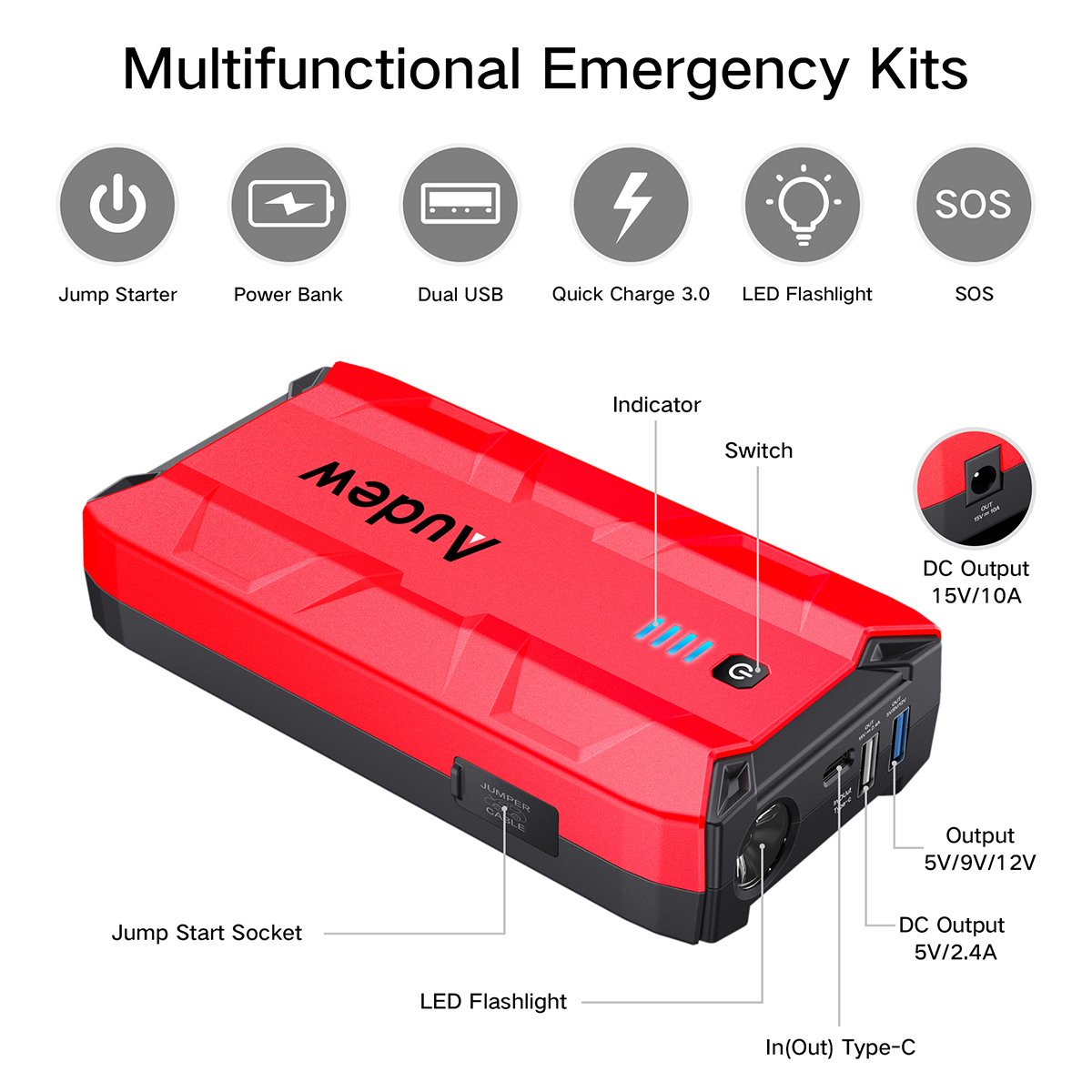
Interpret Red Indicator Lights Immediately
If your car shows zero response when starting, check the Audew’s cable indicator. A solid red light almost always signals reversed polarity—disconnect clamps instantly to avoid frying your vehicle’s computer. Reattach red to positive and black to ground, then retry. No indicator lights suggest a completely depleted Audew battery; recharge the unit fully before proceeding. Never ignore these signals—forcing a start with polarity errors can melt cables or trigger safety shutoffs requiring professional reset.
Handle Partial Cranking Symptoms
Slow or labored cranking indicates borderline power levels. This commonly occurs when the Audew drops below 50% charge in sub-40°F weather. Turn off all non-essential electrical loads, wait 2 minutes for the jump starter’s capacitors to stabilize, then attempt restart. If cranking remains weak after two tries, your unit lacks sufficient peak current for your engine—diesel owners should upgrade to 900A models. Remember: cycling the Audew’s power button twice before starting (as some manuals specify) primes internal circuits for maximum output in extreme cold.
Disconnect Cables to Protect Vehicle Electronics
Once the engine roars to life, remove the black clamp from the engine ground first—never from the battery terminal. This prevents voltage spikes that can corrupt sensitive onboard computers, particularly in modern diesel vehicles with complex fuel management systems. Next, detach the red clamp from the positive terminal. Crucially, ensure clamps never touch each other or metal surfaces during removal; accidental contact could reignite the circuit and damage your Audew. Finally, stow cables in the protective case immediately to prevent fraying or terminal corrosion during storage.
Maintain Audew for Emergency Reliability
Schedule Quarterly Charge Cycles
Recharge your Audew every 3 months even if unused—lithium batteries self-discharge at 2-5% monthly, leaving units dead when needed most. Store it in climate-controlled spaces; garages exceeding 95°F or dropping below 14°F permanently degrade battery capacity. During winter, keep the unit indoors overnight rather than in your trunk for optimal cold-weather performance. A quick 15-minute charge before road trips eliminates “surprise dead” scenarios that defeat the purpose of emergency equipment.
Inspect Cables Before Critical Use
Monthly, examine clamp springs for stiffness and cable insulation for cracks. Corroded clamps increase electrical resistance by up to 40%, crippling power delivery. Clean terminals with a wire brush if white/green residue appears. Replace the entire unit if cables show exposed wires or melted spots—frayed insulation risks short circuits that could ignite flammable materials under your hood. Remember: a jump starter is only as reliable as its weakest component.
Adapt Techniques for Extreme Temperatures

Sub-Zero Cold Weather Tactics
Below 20°F, warm your Audew unit against your body for 5 minutes before use—cold reduces lithium battery output by 30-50%. Never attempt jumps with a frozen unit; if stored in a cold vehicle, bring it inside for 10 minutes first. For diesel engines, preheat glow plugs twice as long as normal and use the highest-capacity Audew model available (900A+). Attempting jumps with a chilled unit guarantees failure; thermal management is half the battle in winter emergencies.
Summer Heat Damage Prevention
Avoid leaving your Audew in direct sunlight or hot cars exceeding 120°F—extreme heat triggers automatic shutoffs or permanently damages cells. If the unit feels warm during storage, let it cool for 20 minutes before use. Never jump-start immediately after driving; wait until the engine compartment temperature drops below 100°F to prevent thermal runaway in the jump starter’s battery. In desert climates, store the unit in your cabin’s center console rather than the trunk for temperature stability.
Key Takeaway: Your Audew jump starter succeeds only when you match its capabilities to your engine’s demands and season-specific challenges. Gasoline vehicles start reliably with standard 400A units when connections are precise, but diesel engines require higher-capacity models (450-900A) plus glow plug preheating in cold weather. Never skip the cable indicator check—it’s your real-time diagnostic tool for avoiding catastrophic errors. Store your unit charged and climate-controlled, test it quarterly by jump-starting a weak battery, and remember that technique outweighs raw power specs. By following these exact steps from Audew’s official guidance, you transform that emergency device from dead weight into a guaranteed lifeline when your battery fails.
